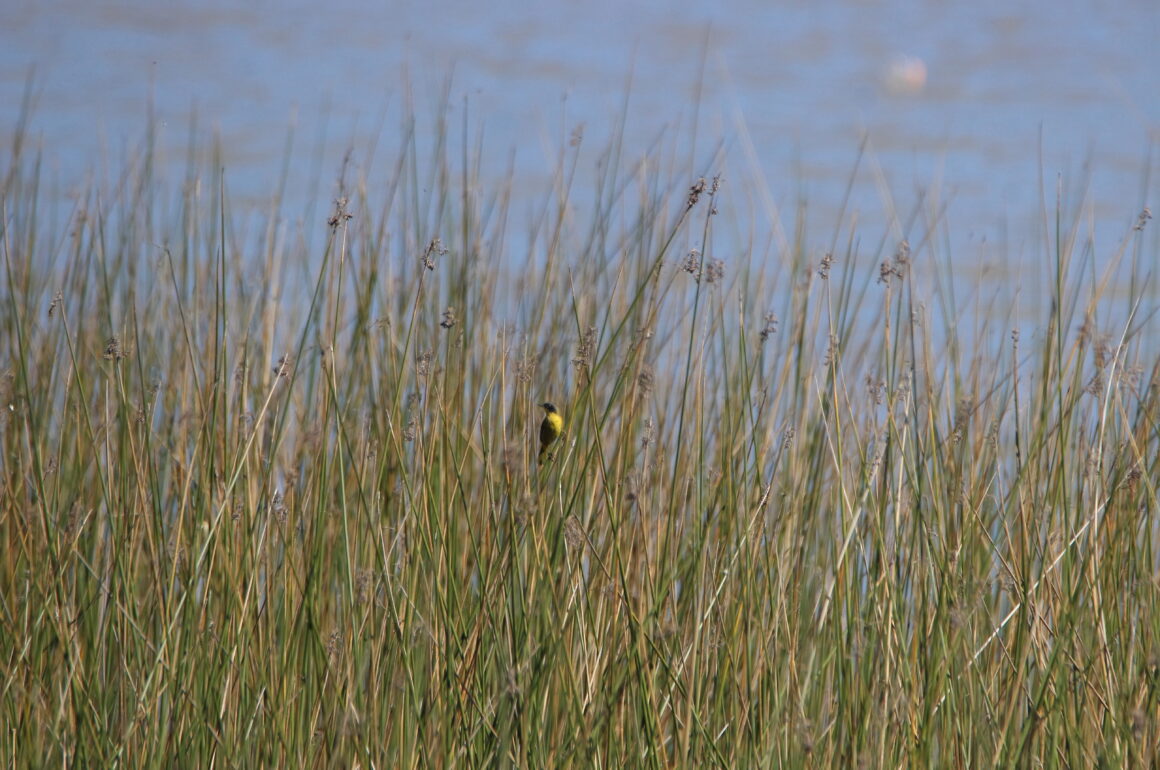
The word “endemic” has always seemed rather vague to me. Oxford Languages offers this definition: 2. (of a plant or animal) native and restricted to a certain place. When a birder uses the word, we usually refer to a species that canbe mostly or exclusively found in a single country. Which means that the large country of Mexico boasts (according to one list) 127 endemic bird species, while the famous birders’ destination of Costa Rica has only 6. It doesn’t seem fair at all.
I’ve seen about a fifth of Mexico’s endemic birds, almost all of them right here in the state of Michoacán. But one of Michoacán’s endemics beats most of these for sheer endemism; it’s entire range would easily fit within only two of Costa Rica’s tiny provinces. The Black-polled Yellowthroat is normally only found on three bodies of water: Lakes Pátzcuaro and Cuitzeo, in Michoacán, and the Ciénega de Lerma (Lerma Marsh), in Mexico State. Here are a couple of my best photos of a male Common Yellowthroat, found across North America, and a male Black-polled Yellowthroat. Females are much more similar, but their songs are still easy to tell apart.
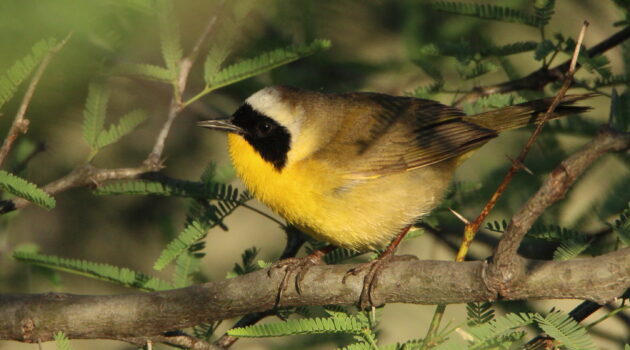
Common Yellowthroat
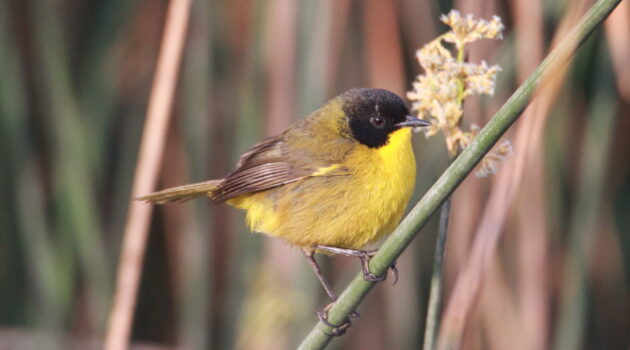
Black-polled Yellowthroat: It’s all in the forehead.
Now, when a species can only be found on three bodies of water, it must be disruptive when one of those, Lake Cuitzeo, essentially dries up, and water levels on the other two are drastically reduced. I was worried about my oh-so-special little buddies. How would our Black-polled Yellowthroats survive?
Fortunately, I now have some answers. Last month, I took four of my biologist friends to a small reservoir within Morelia’s city limits. This reservoir is not usually a very birdy body of water, in spite of its nice stands of cattails and reeds. But I wanted to see if some of Lake Cuitzeo’s waterfowl might not have moved there when their usual wintering grounds disappeared. And indeed they had; we saw 7 wild duck species, where usually there are none.
But more exciting, an ornithologist we all know had also just reported the presence of three Black-polled Yellowthroats moving among this reservoir’s cattails. This was the first report ever for this site. Would we find them as well? Indeed we did!
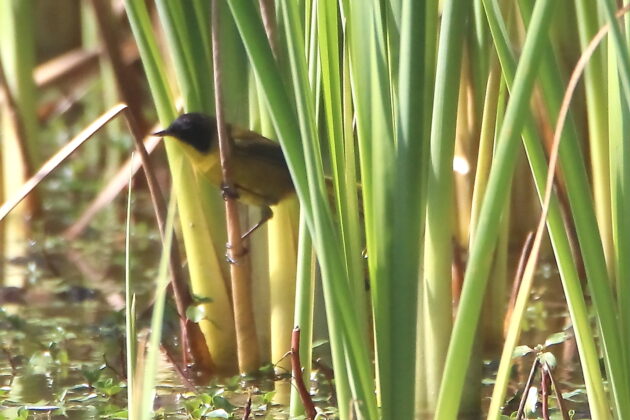
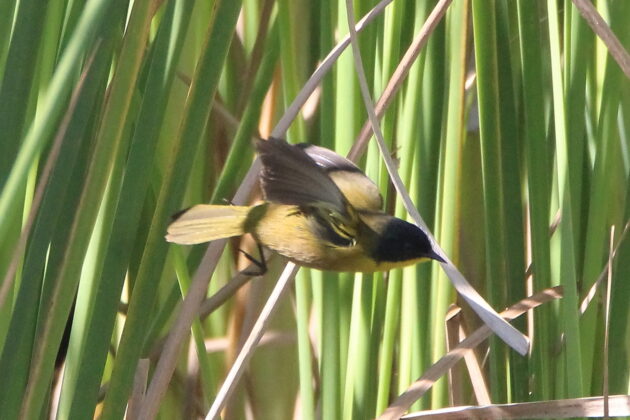
Twelve days later, and we all took off for Lake Pátzcuaro for our region’s only Christmas Bird Count. Lake Pátzcuaro is not deep, but it is apparently about twice as deep as Lake Cuitzeo, and does not dry up like that lake occasionally does. Still, by far the lion’s share of Black-polled Yellowthroat sightings occur at a site I know well, Puente de Jarácuaro, on the lake’s southern shore. As it happened, that was the starting point for our CBC team, and it did not disappoint. The cattails were growing out of what is now dry ground. But the Yellowthroats still turned up quickly.
But this year, the CBC only included a total of ten observers, so half the lake shore was ours. And in the end, we found Black-polleds not only in the usual place, but also at two more sites, where it had never before been reported. More evidence of resilience?
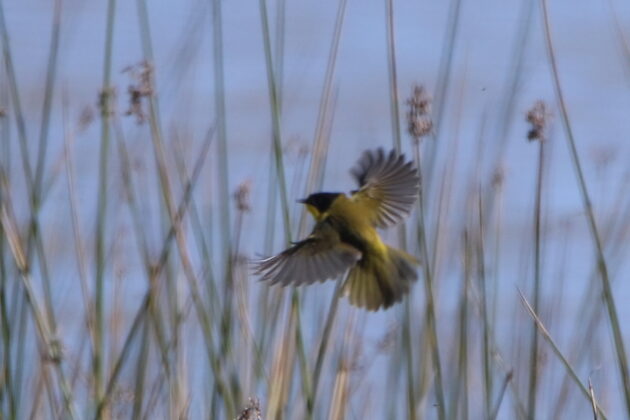
As I prepared to write this post, I found that a very reliable birder has also seen the species on yet another lake, Lake Zirahuen, for the very first time. It was also reported for the second time by Lake Yuriria, just across the state border with Guanajuato — but several anomalies with that report make me less optimistic about its veracity, although the lake would certainly be a reasonable destination for Cuitzeo “refugees”.
Still, it is very encouraging to find that such an extremely site-specific and water-dependent species can manage to fly across many kilometers of dry land to find the habitat on which it depends. And who knows, perhaps it might use this crisis to find a few new breeding grounds, to ensure its survival in the near future?













Makes you wonder why the bird doesn’t expand its range when the lake is full – these other locations must be sub-optimal?
I fully agree with your skepticism regarding the term endemic. It seems a very human-centric way of categorizing bird species. Imagine a species living in a largish country which for whatever reason separates into two different countries (I guess among politicians, there are splitters and lumpers as well – see Spain for just one example of many). So suddenly the bird lives in two different countries and is no longer an endemic despite not having changed its range at all.
Paul,
A few years back (2014) we were visiting the Big Island in Hawaii. I signed up for a trip to look for some endemics and we ended up with some excellent looks at a family of Palila, a species of bird living only in a single forested area on the slopes of the dormant but still active volcano Mauna Kea. Here’s a link to a blog article that I wrote about the event: https://kevinsnatureblog.net/2014/11/10/watching-a-family-of-palila-on-the-big-island/
Kevin